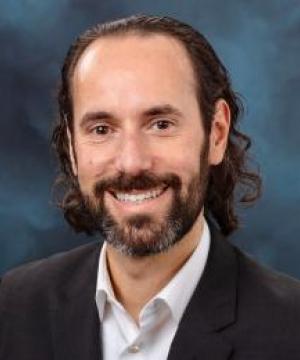
Abstract: Plasma-material interactions in magnetic fusion devices are dominated by processes involving the impacts of energetic ions on the wall, leading to impurity sputtering, ion implantation, particle reflection, and more. All such processes are functions of both the energy and angle of the impacting ions. In this talk, we will present a data-driven strategy for the effective construction of a surrogate model in high-dimensional parameter space for the ion energy-angle distribution (IEAD) output of Particle-In-Cell (PIC) simulations of plasma-material interactions. The methodology is based on a bin-by-bin least-squares fitting of the IEAD in the parameter space. The fitting is performed in a transformed coordinate system to normalize the IEAD, and it employs sparse grids for sampling the parameter space to overcome sampling challenges in high dimensions. The surrogate model is significantly cheaper computationally than direct PIC simulations yet maintains high fidelity to them, providing a fast emulator for those simulations. We will demonstrate the use of the surrogate model for sensitivity analysis by characterizing the dependence of the ion impact angle and energy moments on the physical parameters.
Speaker’s Bio: Dr. Pablo Seleson is a Research Scientist in the Multiscale Methods and Dynamics Group of the Mathematics in Computation Section at the Oak Ridge National Laboratory (ORNL). He joined ORNL as an Alston S. Householder Fellow in the Computer Science and Mathematics Division. Dr. Seleson received a BS in Physics and in Philosophy and an MS in Physics, both from the Hebrew University of Jerusalem in 2002 and 2006, respectively, and a Ph.D. in Computational Science from Florida State University in 2010. After graduation, he joined the Oden Institute for Computational Engineering and Sciences at The University of Texas at Austin as an Institute for Computational Engineering and Sciences Postdoctoral Fellow, where he also worked in close collaboration with the Computer Science Research Institute at Sandia National Laboratories. Dr. Seleson's main research focuses on computational mechanics, specifically peridynamics fracture modeling and simulation, from model development, analysis, and implementation to software development and computational experiments for fracture mechanics applications. His research incorporates multiscale and nonlocal modeling and has more recently broadened to include data-driven surrogate modeling for plasma-material interactions. Dr. Seleson is an editorial board member of Applicable Analysis, the Journal of Peridynamics and Nonlocal Modeling, and the International Journal for Computational Methods in Engineering Science and Mechanics. Dr. Seleson is currently the Chair of the Large Scale Structural Systems and Optimal Design technical thrust area of the U.S. Association for Computational Mechanics and a member of the Computational Mechanics Committee of the Engineering Mechanics Institute of the American Society of Civil Engineers.
Last Updated: December 9, 2022 - 3:14 pm